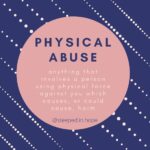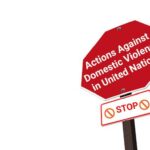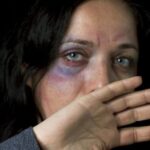Physical abuse is the most visible form of domestic abuse. It includes such behaviour as slapping, burning, beating, kicking, biting, stabbing and can lead to permanant injuries and sometimes death.
The perpetrator’s aim is to intimidate and cause fear. If someone in your family or an intimate partner is acting in this way, regardless of scale, this is physical abuse. Assaults often start small, maybe a small shove during an argument, or forcefully grabbing your wrist, but over time usually become more frequent and more severe. It may be preceded by other abusive behaviours, such as verbal or emotional abuse.
If someone is experiencing physical abuse It’s essential that you seek help from a number of services that provide support.
If you are fearful or believe your life is in danger, it’s important you contact the police immediately.
It’s better to take action before harm occurs, being able to recognise the signs and understanding the information about what abuse is, means we are aware of what can be done to seek help.
If you’re worried that a member of your family or friend is being abused, let them know you’ve noticed something is wrong.
Family members, friends, colleagues, neighbours and community members can be a life-line for those who are living with domestic abuse.
If someone confides in you that they’re suffering domestic abuse:
• Listen to them and reassure them that they are not to blame
• Acknowledge their courage, it takes strength to talk to someone about experiencing abuse
• Give them time and allow them to talk at their own pace, and don’t try to persuade them to talk if they don’t want to
• Acknowledge that they’re in a frightening and difficult situation but reassure them that you are supporting them
• Make sure to tell them that nobody deserves to be threatened or beaten, despite what the abuser has said
• Be there to support them as a friend, encourage them to express their feelings. Respect them to make their own decisions
• Don’t tell them to leave the relationship if they’re not ready, that’s their decision to make in their own time
• Ask them if they have suffered physical harm and if so, offer to go with them to the hospital or GP and help them report the assault to the police if they choose to
• be ready to provide information on organisations that offer help for people experiencing domestic abuse.
“Some people may not be ready to talk and open up about an abusive relationship, but try to find quiet times in safe places, they can talk and confide in you when they choose to and when they are ready.”



